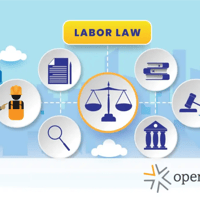Conquering the Compliance Conundrum: Your Guide to Mastering 1099 Contractor Management The gig...
What to Know When Communicating with Independent Contractors vs. Employees
Managers and administrative staff must navigate the delicate balance of communication styles and legal boundaries when discussing independent contractors vs. employees. Missteps in communication can lead to inefficiencies and costly legal repercussions due to misclassification.
Properly distinguishing between these two groups requires an understanding of not just the legal definitions but also the appropriate managerial approaches and interaction methods that respect the independence of contractors while ensuring that employees are managed according to company policies and procedures.
Understanding the distinctions between independent contractors and employees is fundamental to workforce management. With 36% of the U.S. workforce comprising independent workers and the number of 1099 forms reflecting a significant increase over the years, it's clear that independent contracting is more prevalent than ever.
This shift towards a more flexible workforce underlines the importance of mastering proper communication. This pivotal skill ensures both compliance and efficiency in a mixed workforce environment.
Contractual Relationship Differences
The nature of the contractual agreement is also significantly different. Employees usually have an ongoing commitment to their employer, reflected in an employment contract that lacks a definitive end date and includes job security provisions subject to labor laws.
Independent contractors are sourced to perform a specific task at a predetermined rate with a contract with a set duration and clear deliverables or outcomes.
By clearly understanding these distinctions, companies can better structure their interactions and communication with each type of worker, ensuring they remain compliant with labor laws while effectively managing their diverse workforce. This not only helps avoid legal pitfalls but also maintains a productive, transparent, and harmonious working environment.
Essential Communication Do's and Don'ts for Managing Independent Contractors
Organizations should be aware of crucial communication strategies and common pitfalls when interacting with independent contractors. These guidelines help clarify, maintain compliance, and foster a productive working environment.
Do's
- Use Clear, Contract-Specific Language: Clearly define project scopes, timelines, and deliverables in your everyday language - meaning, anyone can read the contract and understand what it says without needing a legal expert to interpret. Avoid employment terminology such as "hire" or "salary."
- Respect Their Independence: Communicate in a way that respects the contractors' autonomy over how they complete their tasks. Avoid dictating the process and focus instead on the results.
- Set Expectations Early: From the outset, make all expectations clear, including deadlines, work standards, and communication protocols.
- Utilize Written Agreements: Always use a detailed contract that outlines every aspect of the work relationship, including scope of work, payment terms, and confidentiality agreements.
- Provide Feedback Efficiently: Offer concise, constructive feedback on deliverables, focusing on the work output and adherence to contract specifications.
- Maintain Professional Boundaries: Keep your interactions professional and focused on project-related communications to maintain a clear independent contractor relationship.
Don'ts
- Avoid Employment-Like Language: Do not use language that implies an employment relationship, like "hiring," "firing," or referring to payments as "salary" or "wages."
- Don't Micromanage: Avoid excessive oversight or control over how independent contractors complete their work, which can blur the lines between contractor and employee.
- Steer Clear of Exclusivity: Unless it's part of a specific, limited-term project, do not expect or imply that the contractor should work exclusively for your organization.
- Skip Benefits Discussions: Do not offer company benefits like health insurance or retirement plans, which is typical of employee relationships.
Pro Tip: Instead, point contractors enrolled with Openforce to their member benefits portal.
- Avoid Rigid Schedules: Refrain from setting specific work hours unless they are necessary and specified in the contract for a particular project.
- Don't Delay Payments: Ensure that payments are made according to the agreed-upon schedule in the contract without the typical payroll withholdings of an employee.
By adhering to these do's and don'ts, organizations can foster effective communication with independent contractors while ensuring compliance with legal standards and maintaining clear distinctions between contractors and employees. This approach minimizes the risk of misclassification and supports a mutually beneficial and productive working relationship.
Conclusion
Navigating the communication landscape with independent contractors requires precision and understanding to ensure compliance and effectiveness. By adhering to the communication do's and don'ts outlined above, your organization can maintain clear and professional relationships with contractors, avoiding common pitfalls that can lead to misclassification. This protects your business from potential legal issues and contributes to a more cohesive and efficient working environment.
Schedule your discovery call today and take the next step toward optimizing your contractor management processes. Our expert team is ready to help you refine your strategies and ensure that your contractor relationships are built on a solid and compliant foundation.



